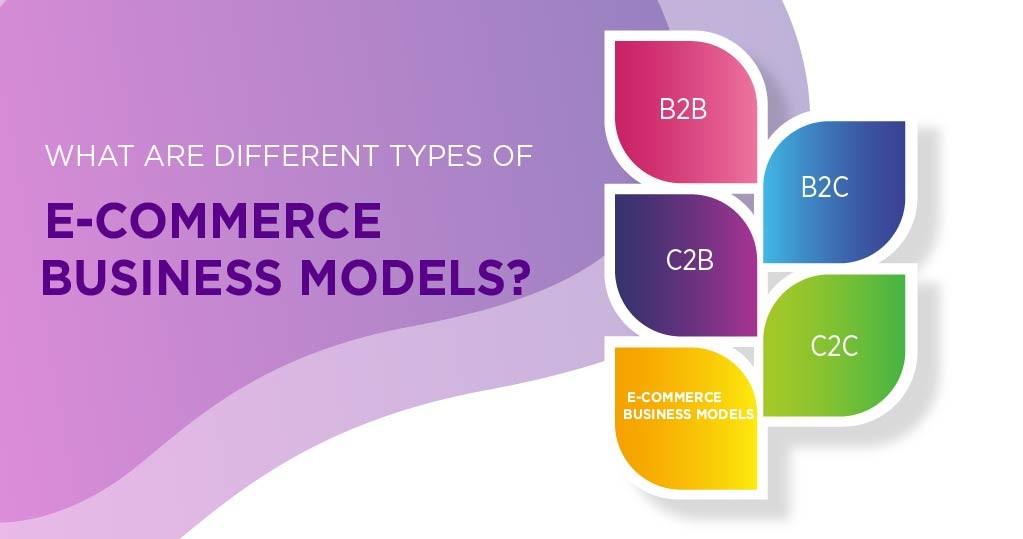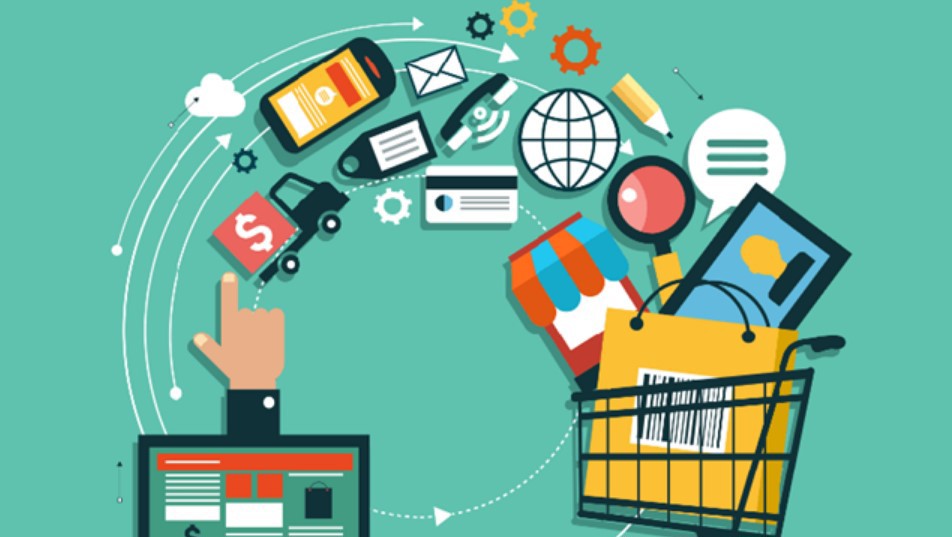Dive into the e-commerce business model and watch your online sales soar! As an expert with my fingers on the digital pulse, I’ll give you insights into unlocking the profit secrets of online marketplaces. From different selling platforms to mastering growth tactics, I’ll lay out the game plan. Your strategy roadmap starts with understanding the basics and moves to complex growth hacks. Stick around, and let’s turn the key to your e-commerce empire together!
Understanding E-commerce Business Models
Differentiating Types of Online Selling Platforms
When you shop online, you’re using an e-commerce platform. Think of it like a digital store. There are many types, each with its own perks. B2B platforms sell stuff from one business to another. Bulk orders are common here. B2C sites are what most of us use. They sell items from businesses to folks like you and me. Then there’s C2C, where regular people sell to each other, like on eBay. Last, subscription services send you stuff on a regular schedule, like a monthly snack box.
Exploring the Dropshipping Model
Let’s dive into dropshipping. Have you ever ordered something online and it came straight from the maker? That’s dropshipping. The seller doesn’t keep items on hand. Instead, when you buy, the maker sends the item to you. This is cool for sellers because they don’t need a big space for stock.
Dropshipping lets sellers offer lots of items without big costs. It’s great for testing new products. Sellers can see what folks like without much risk. Yet, they have less control over shipping and stock quality. So, close work with makers is key. Plus, since it’s pretty easy to start, there’s lots of competition.
The dropshipping model is often used by folks just starting out. It’s also popular with sellers wanting to grow without too much cost. With e-commerce tech getting better, dropshipping is becoming more and more popular.
By using this model, sellers can focus on the fun bits, like finding cool stuff to sell and helping buyers. They let the maker deal with making and storing the product. This means sellers can be more flexible and try out new markets fast.
In dropshipping, you make money by marking up the cost. Say a maker sells you an item for $10. You can sell it for $20 and keep the extra $10. But remember, there’s other money stuff to sort out, like ads and website costs.
Being a good dropshipper means having a strong game plan. You need to know your stuff about the items you sell. You should make sure your website works well and is safe for buyers. Plus, you need to handle customer chats and sort out any problems fast. It’s all about giving the buyer a great time so they come back.
Dropshipping can be a profitable way to sell online. But it’s up to you to make it work. It takes smart choices and great customer care. Keep an eye on new trends and stay ahead of others selling the same stuff. If you get it right, dropshipping can help your business grow big and fast.
Crafting a Strategy for Online Marketplaces
B2B vs. B2C Digital Sales Approaches
When we talk about selling online, we face two main types. B2B means business to business, and B2C stands for business to consumer. Each has its own way. For B2B, relationships are key. Businesses sell to other businesses. They aim for long-term deals and bulk orders. B2C is faster. It’s all about quick sales to people like you and me. Here, we see ads, deals, and online stores set to catch our eye and open our wallets.
In B2B, the game is all about trust and value. You can’t just push a product. You need solid e-commerce strategies that build connections. These bonds lead to repeat sales and loyal customers. Now, think B2C. Here the focus is on how easy it is to buy. Speed and convenience win. This approach thrives on our impulse to click and buy right away.
We now see B2B learning from B2C. They’re making their sites simpler. A blend of both means more success. It’s a digital dance of sorts, with each side borrowing steps.
The Rise of C2C Marketplaces and Subscription Models
Let’s chat about C2C and subscription services. C2C, or consumer to consumer, is where folks sell to each other online. Think of a virtual garage sale on a giant scale. Platforms like eBay let you clear out your closet and fill someone else’s.
These C2C marketplaces have bloomed. Why? They give people a spot to find unique things or sell their own. Plus, there’s trust. Seeing ratings and reviews makes buyers feel safe.
Then there are subscriptions. They’re not just for magazines anymore. From snacks to socks, you can get anything mailed to you every month. This model locks in sales ahead of time. It also gives customers a thrill of something new on a regular basis.
For sellers, C2C means low cost. You list your item, and off it goes. No need for a store or big ads. Subscriptions are a steady stream of cash. They help you guess how much you’ll make and when.
Both these models are part of the e-commerce boom. They allow sellers of all sizes to hop into the market. They offer experiences – not just stuff in a box. That’s the charm – the feeling of community and surprise. It’s not just selling; it’s an exchange of delights and ease.
When used well, these strategies can blast your online sales into the stars. Whether you offer products or services, it’s about how you connect. It’s crafting that perfect mix of tech, trust, and the human touch. That’s the secret sauce in today’s digital shopping feast.
Mastering E-commerce Profitability and Growth
Maximizing Direct to Consumer Online Strategies
Going direct to consumer (D2C) means cutting out stores or middlemen. It’s a smart move for any online brand. You control your tale from start to end. You get closer to those who buy your goods. But how do you ramp up this strategy? Here’s a meat-and-potatoes guide.
Let’s boost those sales. First, know your audience like they’re your next-door neighbor. Use data to learn what they click, like, and buy. With this info, personalize everything. From emails to product recs, make it about them. A happy buyer comes back.
The golden rule? Keep buyers at ease. Have a website that’s easy peasy to use. This means clear menus, a simple search function, and a checkout that’s a breeze. Nail these, see your cart fills go up.
Next, shine a light on reviews. We’re social critters; we trust other’s words. Show off what people are saying. Make sure it’s real talk, not just fluff.
Talk back, too. Be quick and helpful when customers reach out. Great chat and service keep folks coming back.
Loyalty programs? Yes, please. Give perks for their bucks, and they’ll stick like glue. Think discounts, early access, or just a birthday shout-out.
And don’t ignore the mobile crowd. People shop with thumbs more than ever. So, your site better work like a charm on phones and tablets.
Leveraging Multi-Vendor Marketplaces for Business Expansion
Expanding your reach is a must. And multi-vendor marketplaces are like big online malls. Your shop gets to hang with others, and customers love variety. So how can you leverage these digital market hubs?
For starters, get your gear on the big names. Amazon and eBay ring bells, right? Here’s why they’re hot. They bring lots of eyeballs to your stuff. Plus, they’re like trust magnets for buyers. But remember, there’s a fee to pay to play.
Still, it’s not just about listing your items and kicking back. You’ve got to stand out. How? Price smart, not just low. Bundle items. Curate deals. Show those marketplace browsers you’ve got the best stuff.
Show up in searches by playing the SEO game. Use words that buyers might tap into that search bar. Don’t stuff them in, though. Make it natural. Be crafty with keywords, and you’re more likely to pop up.
Remember, even on these platforms, brand matters. Keep your style through your pages and offers. This sings your brand loud and clear in this online chorus.
Upload quality snaps of your products. Make them pop. If a buyer can’t touch or try, they trust in what they see. Clear, crisp photos can sway that click to cart action.
Finally, analyze and adapt. Use tools that tell you what’s hot or not. Change your tactics based on real numbers, not just hunches.
By tapping into D2C channels and opening your doors on multi-vendor stages, you boost your online presence big time. Nail these moves, and watch your e-commerce game level up.
Operational Excellence in E-commerce
Streamlining Physical Goods E-commerce with Efficient Logistics
Moving products fast keeps customers happy. That’s the heart of e-commerce logistics. In this game, speed wins. Your store must send products quick and without mistakes. This means having good ties with those who make and move your goods. You need a smooth path from warehouse to doorstep. A solid plan takes care of storage, packing, and shipping.
Now, imagine having a magic wand. With a wave, you fix every glitch in your product’s journey. That’s what great logistics feel like. It can cut costs, get products out faster, and even boost sales. Think of it like a race track; the smoother it is, the faster you’ll go. But bumps slow you down. Keep your track smooth with good choices in packing material and delivery routes.
The Role of Third-Party Logistics in E-commerce Fulfillment
What if you didn’t have to handle products at all? Enter third-party logistics, or 3PL. They store, pack, and ship your goods for you. 3PLs can be game-changers. They let you focus on selling, not boxing up orders. It’s like having a super team that takes the heavy lifting off your hands. They also scale with you. Sell more, they handle more. Sell less, and you’re not stuck with extra staff or space.
Trust is key when you team up with a 3PL. You hand them your products and your customer’s trust. Make sure they match your customer care standards. They must ship fast, deal with returns well, and keep inventory right. Get this part right, and you’ve got a silent business partner you can rely on.
In short, winners in e-commerce play a smart game with logistics. They know when to outsource, and they choose partners that help them shine.
So, we’ve talked about how e-commerce works, from choosing a model to making it big. We looked at online selling, dropshipping, and the difference between B2B and B2C. We also saw how cool C2C and subscription services are getting.
Then, we dived into how you can make more money by selling directly or using other sellers in a multi-vendor place. We finished by seeing how to send things out fast and smart, and why having help from others can be a game-changer.
My final thought? To win in e-commerce, choose the right model, have a strong plan, always aim for growth, and make sending stuff to your buyers smooth. Stick to these steps, and you’re set for success. Let’s get selling!
Q&A :
What are the main types of e-commerce business models?
E-commerce business models can be categorized into four main types: B2C (Business-to-Consumer), B2B (Business-to-Business), C2C (Consumer-to-Consumer), and C2B (Consumer-to-Business). B2C involves retailers selling products directly to the end-user, while B2B focuses on selling products or services from one business to another. C2C e-commerce comprises transactions between consumers, often facilitated through platforms like eBay or Etsy, and C2B reverses the traditional e-commerce model by allowing individuals to sell products or services to businesses.
How does an e-commerce business model differ from a traditional business model?
An e-commerce business model differs from a traditional business model in its methodology of reaching customers and executing transactions. E-commerce businesses are typically operated online without a physical storefront and are accessible 24/7, allowing for a broader reach and convenience. Transactions are done electronically, which can reduce overhead costs. Traditional business models rely heavily on physical presence and in-person transactions.
What is the best e-commerce business model for startups?
The “best” e-commerce business model for startups depends greatly on the specific product or service offered, target market, and resources available. However, the B2C model is often favorable for startups because of its relative simplicity, direct engagement with customers, and potential for rapid growth. Dropshipping, a subset of B2C, is also popular among startups due to its low upfront investment requirement and ease of set-up.
Can you switch your e-commerce business model once established?
Yes, it’s possible to switch your e-commerce business model once established; however, such a change requires careful planning and consideration of the implications. The transition can involve significant adjustments in marketing strategy, supply chain management, and customer service approach. Businesses considering a switch should conduct a thorough analysis of the new model’s profitability and sustainability before making any changes.
How do you determine which e-commerce business model is most profitable?
Determining the most profitable e-commerce business model involves analyzing market demand, competitive landscape, profit margins, scalability, and operational costs. It’s essential to conduct a feasibility study and market research to gather data on consumer behavior and preferences. Also, projecting cash flow and considering long-term growth potential are critical steps. The model that aligns best with your product or service, while maximizing revenue and minimizing costs, would typically be considered the most profitable.






